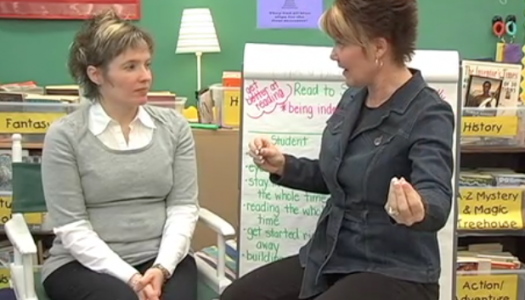Staying Out of the Way - Refining Step 8
Join Our Community
Access this resource now. Get up to three resources every month for free.
Choose from thousands of articles, lessons, guides, videos, and printables.
When Daily 5 was first developed, students were placed around the room (step 6) so they could practice and build stamina (step 7). As they worked, we supported them and recognized what a good job they were doing, and periodically corrected or redirected those who were off task.

Our students built stamina quickly, but since they had attached their on-task behaviors to our monitoring, they relied on the extrinsic motivation and were far from independent. This became painfully evident the first time we tried to do a one-on-one assessment with a student.
This unfortunate experience led to the addition of step 8, Stay Out of the Way. When we stayed out of the way, students built stamina, behaviors of independence, and the intrinsic motivation necessary to become habitual readers and writers. During the launching phase, we built stamina in small, incremental steps, signaling the end of the round and calling all students back to our gathering space when someone’s stamina broke.
As we worked in classrooms this year, we began to consider weaving another layer of support into step 8 when needed. As mentioned, when we initially stayed out of the way, we did so while surreptitiously watching for the student(s) who broke stamina first. If we noticed that the same student(s) tended to be responsible for the round ending, we would intervene using strategies from Levels of Support for Barometer Children. Although we still believe in the vital importance of staying out of the way so on-task behaviors are not anchored to us, we know we can successfully stay out of the way while conducting one-on-one conferences to assign a behavior goal to students who need extra support and scaffolding to be successful.
When we are launching Read to Self, we stay out of the way for the first two or three practices, making note of students who may benefit from some immediate behavior support. Then in the next practice session, during step 8, we quietly move to those students and, using the Online Conferring Notebook or paper/pencil conferring notebook, help them identify the area of behavior they are struggling with and and the goal that will help them be more successful.
By weaving this support into step 8, we are able to intervene early, respectfully supporting students before more intense interventions, like those in 5 Levels of Support for Barometer Children, become necessary. It also helps teachers get into the important practice of moving out into the room to hold one-on-one conferences, which are the heart and soul of differentiating and accelerating achievement.







